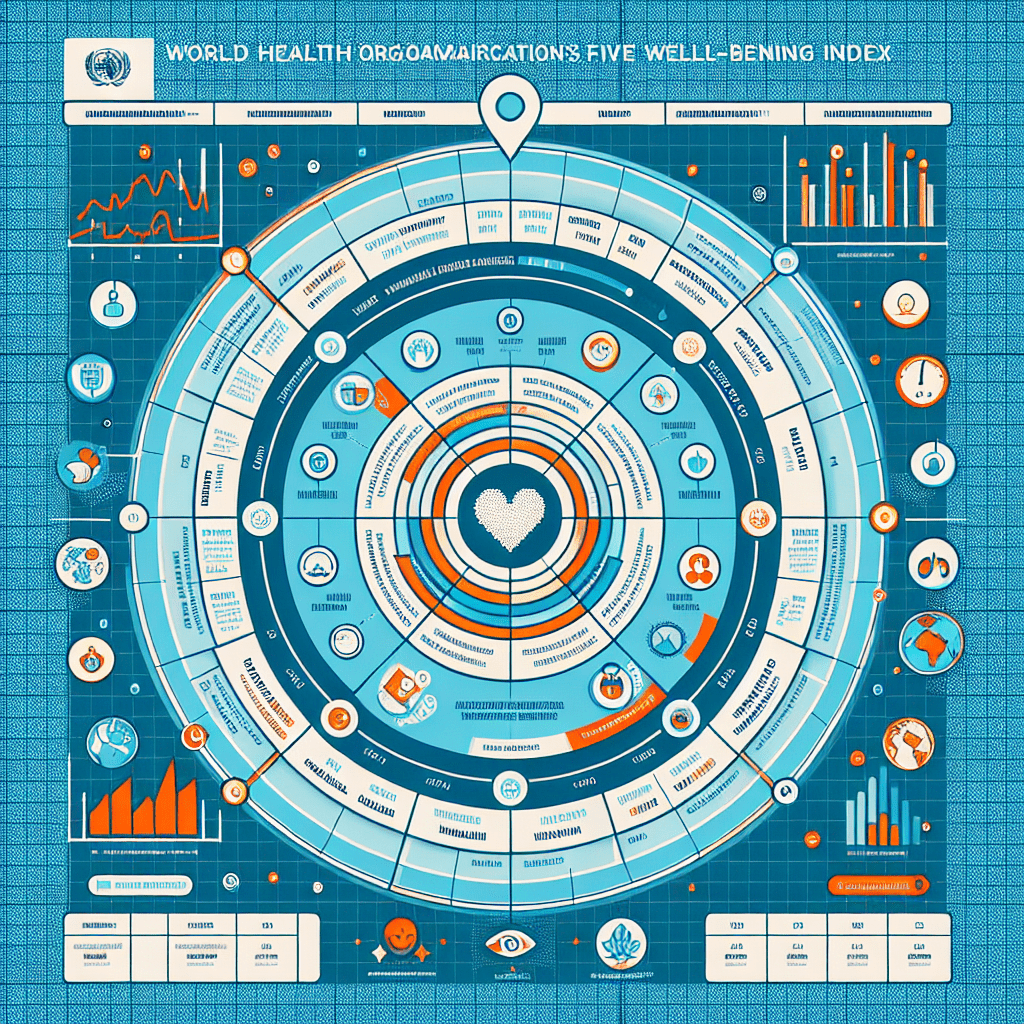-
Table of Contents
- The World Health Organisation- Five Well-being Index (WHO-5), WBI
- What is the WHO-5?
- Methodology of the WHO-5
- Applications of the WHO-5
- 1. Mental Health Assessment
- 2. Evaluation of Treatment Outcomes
- 3. Population Surveys
- Case Studies and Statistics
- 1. Study on Mental Health in the Workplace
- 2. National Well-being Surveys
- Summary
The World Health Organisation- Five Well-being Index (WHO-5), WBI
The World Health Organisation (WHO) is a specialized agency of the United Nations responsible for international public health. One of the key initiatives of WHO is the development of tools and indices to measure and monitor the well-being of individuals and populations. The WHO-5, also known as the Five Well-being Index (WBI), is one such tool that has gained significant attention in recent years. In this article, we will explore the WHO-5 in detail, its purpose, methodology, and its implications for public health.
What is the WHO-5?
The WHO-5 is a self-report questionnaire designed to assess subjective well-being. It consists of five simple questions that capture different dimensions of well-being, including positive mood, vitality, and general interest. The questionnaire is widely used in both clinical and research settings to measure the psychological well-being of individuals.
Methodology of the WHO-5
The WHO-5 questionnaire is based on a Likert scale, where respondents rate each question on a scale from 0 to 5. The scores for each question are then summed up to obtain a total score ranging from 0 to 25. Higher scores indicate better well-being, while lower scores suggest poorer well-being.
The five questions in the WHO-5 are as follows:
- Over the last two weeks, how often have you felt cheerful and in good spirits?
- Over the last two weeks, how often have you felt calm and relaxed?
- Over the last two weeks, how often have you felt active and vigorous?
- Over the last two weeks, how often have you woken up feeling fresh and rested?
- Over the last two weeks, how often have you felt interested in things?
The responses to these questions provide a snapshot of an individual’s well-being and can be used to track changes over time or compare different populations.
Applications of the WHO-5
The WHO-5 has a wide range of applications in both clinical and research settings. Here are some of the key areas where the WHO-5 is used:
1. Mental Health Assessment
The WHO-5 is commonly used as a screening tool for mental health disorders such as depression and anxiety. Research has shown that lower scores on the WHO-5 are associated with a higher risk of developing mental health problems. By administering the WHO-5, healthcare professionals can quickly identify individuals who may require further evaluation and intervention.
2. Evaluation of Treatment Outcomes
The WHO-5 is also used to assess the effectiveness of interventions and treatments for mental health disorders. By measuring well-being before and after treatment, healthcare providers can determine whether the intervention has led to improvements in psychological well-being. This information is crucial for evaluating the impact of different treatment approaches and guiding future interventions.
3. Population Surveys
The WHO-5 is often included in population surveys to assess the well-being of different communities or countries. By collecting data on well-being using a standardized tool like the WHO-5, researchers can compare well-being across different populations and identify factors that contribute to higher or lower levels of well-being. This information can inform public health policies and interventions aimed at improving the well-being of communities.
Case Studies and Statistics
Several studies have demonstrated the utility of the WHO-5 in various contexts. Here are a few examples:
1. Study on Mental Health in the Workplace
A study conducted in a large multinational company used the WHO-5 to assess the mental well-being of employees. The results showed that employees with lower WHO-5 scores were more likely to report symptoms of burnout and higher levels of stress. This information prompted the company to implement interventions such as stress management programs and flexible work arrangements to improve employee well-being.
2. National Well-being Surveys
In several countries, national well-being surveys have been conducted using the WHO-5. These surveys provide valuable insights into the well-being of the population and help identify areas where interventions are needed. For example, a national well-being survey in a European country found that young adults had lower WHO-5 scores compared to older adults, indicating a need for targeted interventions to improve the well-being of young people.
Summary
The WHO-5, also known as the Five Well-being Index (WBI), is a self-report questionnaire developed by the World Health Organisation to assess subjective well-being. It consists of five simple questions that capture different dimensions of well-being. The questionnaire is widely used in clinical and research settings to measure psychological well-being, screen for mental health disorders, evaluate treatment outcomes, and conduct population surveys.
The WHO-5 provides valuable insights into the well-being of individuals and populations, helping healthcare professionals and policymakers make informed decisions. By using a standardized tool like the WHO-5, researchers can compare well-being across different populations and identify factors that contribute to higher or lower levels of well-being. Ultimately, the WHO-5 plays a crucial role in promoting and monitoring the well-being of individuals and communities worldwide.


